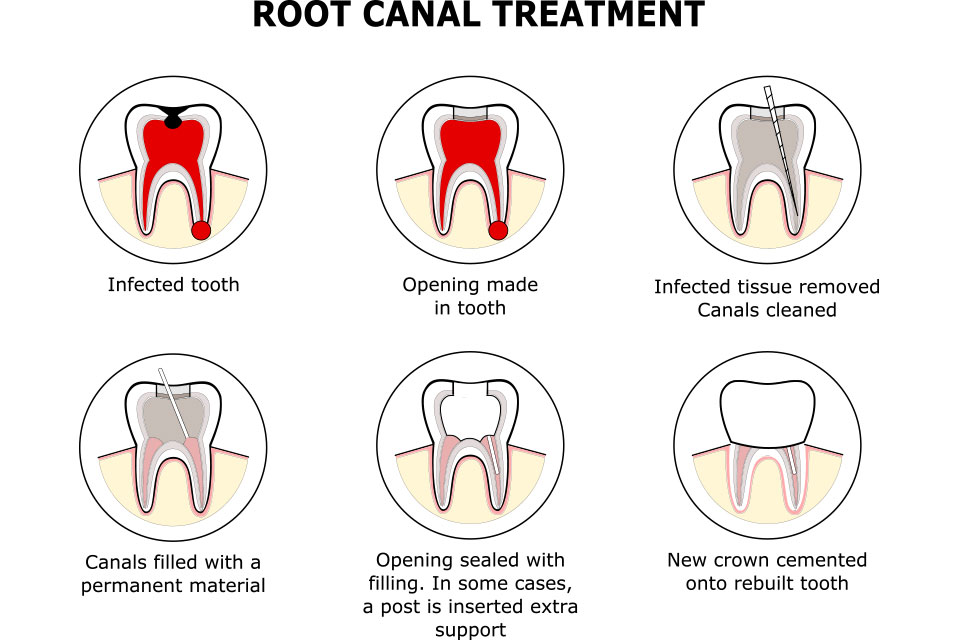Root CanalsAntelope Dental Associates2020-03-25T23:21:34-07:00 
Root Canals Antelope, CA
What you need to know about root canals.
It’s understandable that you might feel a bit anxious when you hear “root canal,” but with modern anesthetics, you’ll rarely be in any pain and it is a necessary procedure to save your tooth.
During root canal treatment, we create an entrance into the top portion of the tooth, clear the canal of infected or decayed pulp, then fill it with biocompatible material. The treatment process usually takes one appointment, with a followup appointment to complete the restoration. (This can vary, however, depending on the complexity and severity of the infection.)
If you experience symptoms of infection such as pain or swelling, then please call us at (916) 331-6288. We can provide an assessment to determine what treatment is right for you and if you need a root canal.
FAQ
Below, we answer some of the frequently asked questions (FAQs) and answers associated with root canals.
Underneath your tooth’s outer enamel and within the dentin is an area of soft tissue called the pulp, which carries the tooth’s nerves, veins, arteries, and lymph vessels. Root canals are very small, thin divisions that branch off from the top pulp chamber down to the tip of the root. A tooth has at least one but no more than four root canals.
When the pulp becomes infected due to a deep cavity or fracture that allows bacteria to seep in, or injury due to trauma, it can die. Damaged or dead pulp causes increased blood flow, and this pressure cannot be relieved from inside the tooth. Pain is present when biting down, chewing, or applying hot or cold foods and drinks.
Because the tooth will not heal by itself. Without treatment, infection will spread, bone around the tooth will begin to degenerate, and the tooth may fall out. The pain gets worse until it forces you to seek emergency dental attention. The only alternative is usually extraction of the tooth, which can cause surrounding teeth to shift crookedly, resulting in a bad bite. Though an extraction is cheaper, the missing tooth requires an implant or a bridge, which can be more expensive than root canal therapy. If you have the choice, it’s always best to keep your original teeth.
First, we will probably give a local anesthetic to numb the area. We place a rubber sheet (dental dam) around the tooth to isolate it. Next, we create a hole to enter the crown and remove any affected tissue. We may also insert medication into the area to help fight bacteria. Depending on the condition of the tooth, we’ll temporarily seal the tooth to guard against recontamination, or the tooth may be left open to drain, or we may go right ahead and fill the canals. If we use a temporary filling, we will typically remove it at the next visit and the canal(s) will be filled. Once filled, we permanently seal the tooth and place a porcelain crown to strengthen tooth structure and improve appearance.
Swelling may cause discomfort for a few days, which can be controlled by an over-the-counter pain killer. A follow-up exam can monitor tissue healing. From this point, brush and floss regularly, avoid chewing hard foods on the treated tooth and see your dentist regularly.

